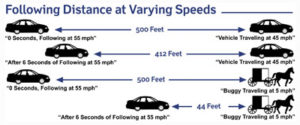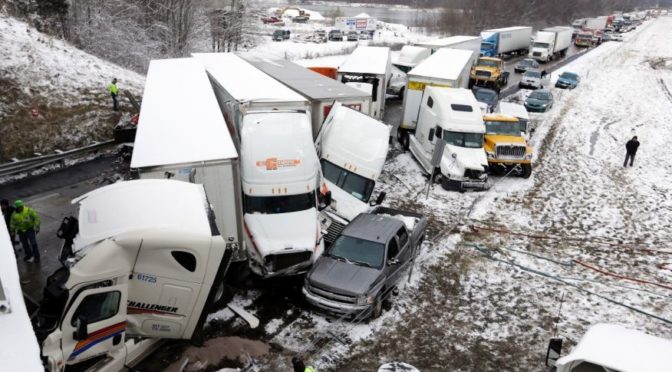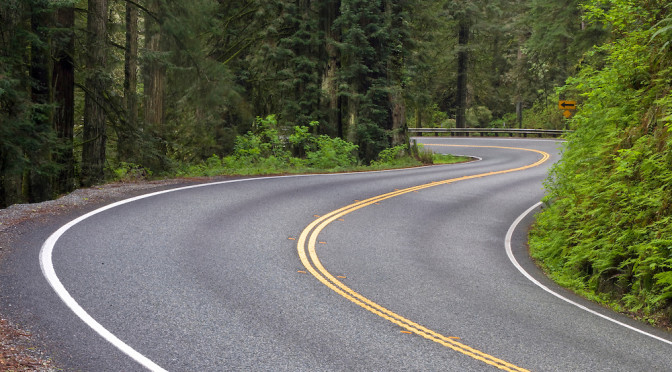On Friday, October 5, 2012, 53 cars were involved in a pileup crash on a Florida highway that injured more than 50 people. And that, apparently, was just the beginning. On Thanksgiving day, a 150-car pileup near Beaumont, Texas killed two people and injured nearly 80 others. Within a single week, an additional six pileup crashes were reported:
- Dec. 17: 27 car pileup in Quebec City
- Dec. 19: 60 car pileup in California
- Dec. 19: 7 car pileup in Vancouver
- Dec. 19: 35 car pileup in New York
- Dec. 20: 23 car pileup in Texas
- Dec. 20: 25 car pileup in Iowa
That’s nearly 400 cars wrecked in just 8 crashes in a 12-week period – five of those pileups have happened in the past 24 hours. There are some common factors to these incidents.
All of them happened on highways. In most of them, weather conditions were considered a “contributing factor”. In all of them, driver error was a primary factor.
While highways offer convenience and efficiency, allowing us to quickly move between distant cities, simple errors can quickly turn them deadly. Here are four tips to keep yourself out of a deadly pileup.
1. ADJUST YOUR SPEED.
In most states, the maximum speed limit posted on a road applies only during “optimal conditions” – that is, dry roads in daylight with good visibility. If weather conditions deteriorate and the roads become compromised with rain, ice or snow, or visibility is compromised with fog or darkness, the law requires drivers to reduce their speed accordingly.
The distance it takes your car to come to a complete stop depends on a few things, including your reactions, your speed, the mass of your vehicle and your traction (here’s a tip: good tires on dry roads stop waaaaay shorter than bald tires on wet roads).
 Driving too fast shortens your stopping distance while slippery roads increases it. This leaves you open to hydroplaning or skidding – either way, you’re out of control.
Driving too fast shortens your stopping distance while slippery roads increases it. This leaves you open to hydroplaning or skidding – either way, you’re out of control.
2. MAINTAIN A SAFE FOLLOW DISTANCE.
But speeding isn’t the only mistake here. On the highway you should maintain a 4-6 second follow distance from the car in front of you, and add an extra second for every inclement weather condition (add a second for rain, another for fog, et cetera).

This gives you time to react safely if something awful goes down ahead of you.
3. KEEP YOUR SPACE CUSHION CLEAR.
In addition to your follow distance, make sure you keep a space cushion around your vehicle for safety. Stay aware of the traffic around you, and don’t let yourself get boxed up – boxed-in cars become squished cars in a traffic pileup.
4. CHANGE YOUR PLANS.
Here’s the simplest advice to stay alive: if the weather is forecast to turn bad, clear your schedule and stay home. If you absolutely have to drive, stay off the highway. Take local roads where traffic is more likely to be moving slowly anyway. Arriving late is better than never arriving at all.
If you learned something from this article, great! You’re now a little bit smarter than the average driver. Share this with as many people as you can and maybe we can put an end to these horrible pileup crashes.






